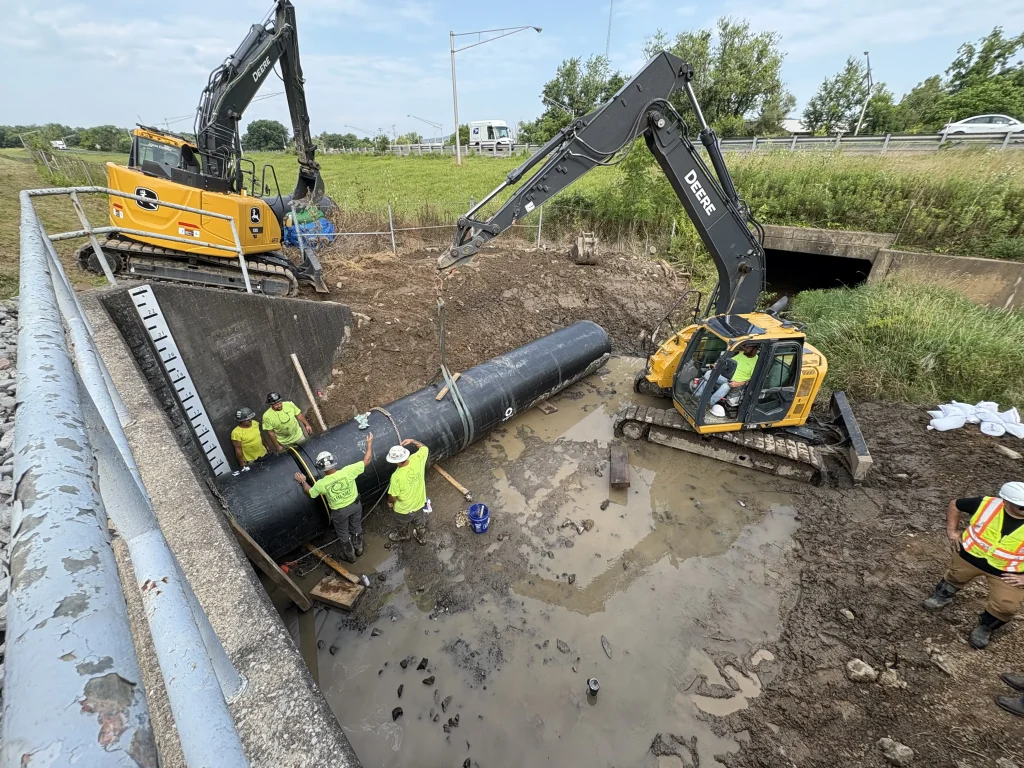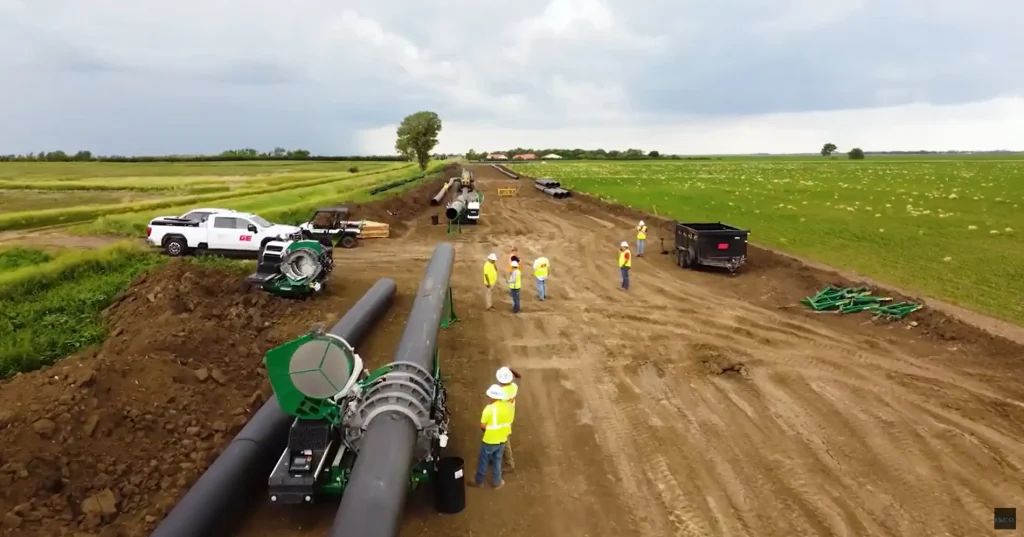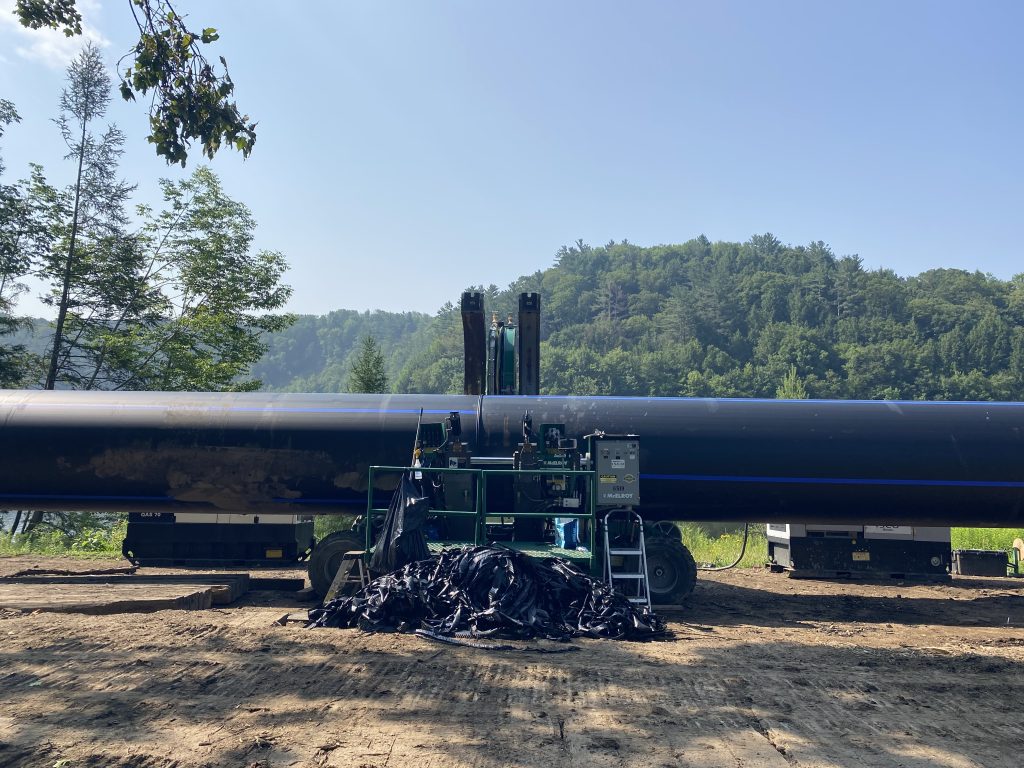Resources
Field Reports
Mineral Company Relines Damaged Culvert Under Railroad with Snap-Tite®, Improves Flow with Hydro-Bell
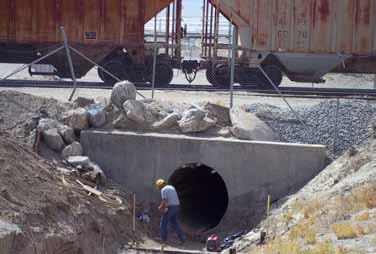
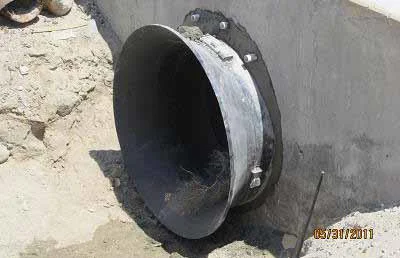
The Problem
Road collapse, road closures and traffic delays – these are recurring news headlines attributed to failing culverts across the U.S. Many drainage culverts were installed 40 to 50 years ago and are now past their design life. As such, they are failing at an alarming rate and causing roadway and railway damage. This affects both the public and private industry.
One such culvert affected a private enterprise in Trona, California. Searles Valley Minerals was faced with a failing culvert underneath a railroad that delivers supplies to the company’s plant. The damaged culvert was a 72-inch corrugated metal pipe (CMP) that had a length of 120 feet. A failure of the CMP would compromise the structure of the railway and disrupt service of the rail line going into the plant. The company needed a permanent solution that would not disrupt the railway traffic or compromise the flow of drainage through the pipe.
The Solution
Searles Valley Minerals had used Snap-Tite®, a culvert lining system, to reline other damaged culverts affecting entrances into their plant. Since they were happy with the results of using that product, they wanted to use it again for this project.
“Six months ago, we were fortunate to run across Snap-Tite’s® approach to renovating CMP culverts. We were faced with repairing approximately 160 linear feet of an 84- inch CMP culvert that could not be taken out of service for replacement,” said Peter E. Gray, P.E., engineer with Searles Valley Minerals. “The Snap-Tite® approach made the repair painless.”
Matthew Menzel, capital projects/new construction supervisor for Searles Valley Minerals, worked with Snap-Tite® representatives on this project to come up with the best size and length of Snap-Tite® pipe to reline the old CMP. They decided to use 63-inch outside diameter (OD) Snap-Tite® pipe.
The Snap-Tite® culvert lining system is made of high-density polyethylene (HDPE) pipe. Snap-Tite’s® patented male/female machining at each end of the HDPE allows the pipe ends to be ‘snapped’ together, piece-by-piece, and pushed into the full length of the existing pipe. The pipe liner is available in lengths from two feet to 50 feet, and is available for culverts with diameters from eight inches to 84 inches. Larger diameters are available on request.
Generally, Snap-Tite® pipe liners do not decrease flow even though the diameter of the original pipe is decreased with the liner in place. However, the county flood group wanted to make sure that once the 72-inch CMP was replaced with a 63-inch Snap-Tite® pipe liner there would be no entrance losses.
To make sure they were in compliance with the county flood group’s flow requirements, the customer needed a solution that would allow them to use Snap-Tite® and at the same time improve flow. Gray found what he needed on the Snap-Tite® website. Snap-Tite® had already come up with a solution to increase flow, the inlet control device Hydro-Bell.
“Most recently we were faced with a different challenge with our second installation. The county flood control district required us to match the original flow capacity of an existing 120-foot section of 72-inch CMP culvert beneath our railroad yard. While performing the hydraulic calculations we could not quite arrive with the same flow capacity with the 63-inch OD Snap-Tite® liner. Although we were able to use the superior flow characteristics of Snap-Tite®, it still wasn’t quite enough. With the reduced opening size (63-inch versus 72-inch), the entrance losses had naturally increased. We were faced with fabricating our own flared opening of concrete or metal to relieve some of those entrance losses” said Gray. “Fortunately I was reviewing Snap-Tite’s® excellent site on the computer and was happy to see they had already come up with a solution, the Hydro-Bell! What an innovative company! The installation was easy and solved my problems.”
Independent testing conducted by Utah State University found that the Hydro-Bell increases hydraulic flow by approximately 30 percent, compared to plain end headwalls under inlet control conditions typically found in culvert applications.
Hydraulic flow in short runs of pipe, such as drainage culverts, is often controlled by inlet and/or outlet conditions. It is possible to maximize flow rate by altering the inlet or outlet conditions in the culvert. However, in most cases, the outlet conditions are difficult to alter; but it is possible to modify the inlet condition.
Also according to the study, as head pressure increases, the Snap-Tite® Hydro-Bell system flow rate also increases versus a square end inlet, making it ideal for flood-prone drainage culverts. The Hydro-Bell is designed to “snap” onto the standard Snap-Tite® culvert lining system’s machined ends – providing a larger, wider intake at the culvert entrance.
“In this day and age, it is comforting to run across a company that has placed the resources required to continue improving a product that’s already a winner,” added Gray. “I’d recommend the Snap-Tite® product to anyone inquiring.”
The Installation
The mineral company’s crew worked quickly to reline the damaged culvert. The Snap-Tite® pipe was snapped together and inserted into the damaged CMP. To snap the pipe sections together, the crew did not need any special equipment and was able to use only a come-along and chains. At the end, the Hydro-Bell was also snapped on to the end of the Snap-Tite® pipe, creating a leak-free piping system. Grout was used to fill in any annular space between the old culvert and the new liner.
The whole time the crew worked, the rail line remained open and in use, so the company continued to use rail to send and receive materials. The culvert rehabilitation was completed quickly with no disruption. Also, the Snap-Tite® liner, combined with the Hydro-Bell, maintained the required flow through the newly relined pipe.
